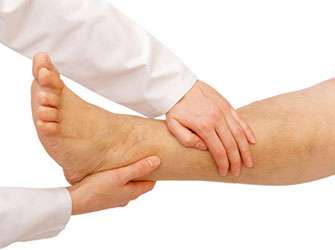'Risk calculator' developed for venous thromboses

In Austria, around 15,000 people a year develop a venous thrombosis, the occlusion of a vein that can result in a pulmonary embolism. A clot breaks free from a vein and travels via the bloodstream to the lungs, where it blocks vessels. People who have survived one thrombosis or pulmonary embolism are at risk of the event happening again. Researchers at the MedUni Vienna have now developed a "risk calculator" that enables doctors to estimate this risk more accurately.
The new prediction model (known as the Vienna Prediction Model) will be used at the anticoagulant clinic within the University Department of Internal Medicine I at the MedUni Vienna and the Vienna General Hospital and works on the basis of three key factors: "The patient's gender, the location of the thrombosis and a bio-marker known as the D-dimer," explains Sabine Eichinger-Hasenauer from the University Department of Internal Medicine.
D-dimers are the products of protein separation. The D-dimer level in the blood is of major significance in the diagnosis or exclusion of deep venous thrombosis and pulmonary embolisms, but also in predicting the risk of the condition recurring.
World's largest thrombosis study
The recurrence of a venous thrombosis or pulmonary embolism can only be prevented through intensive treatment with clot-preventing medications. Many patients are therefore advised to take long-term therapy. This therapy, however, means the daily and in some cases lifelong consumption of medications which also entail a major risk of bleeding, which can sometimes even be fatal.
With the risk calculator developed as part of the world's largest study on thrombosis, the Austrian Study on Recurrent Venous Thromboembolism (AUREC), it is now possible to estimate – and shorten – the duration of treatment more precisely and forecast the risk of thrombosis or embolism recurring more accurately. Shorter courses of treatment with clot-preventing medications are then possible, thereby reducing the risk of bleeding.
The presentation of the results of the current study at the MedUni Vienna, for which test subjects are currently still being recruited (for information, call 40 400 – 4496/Lisbeth Eischer, University Department of Internal Medicine I), was also one of the most well-attended presentations at the Congress of the International Society on Thrombosis and Haemostasis held last July in Amsterdam.
















